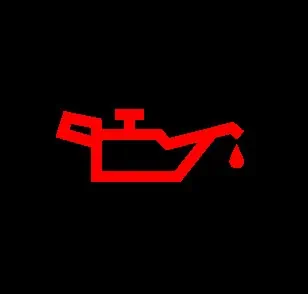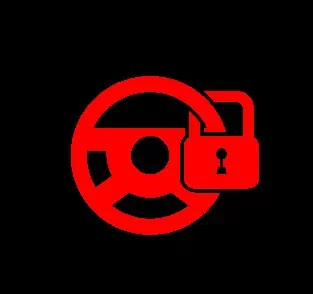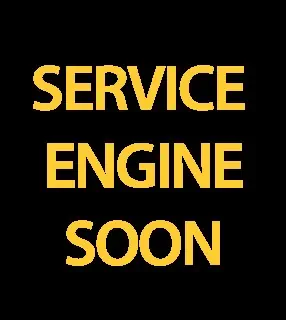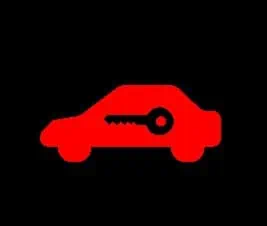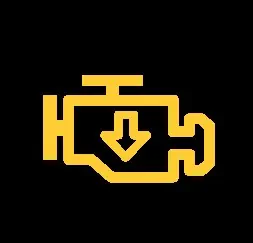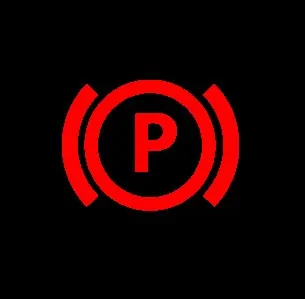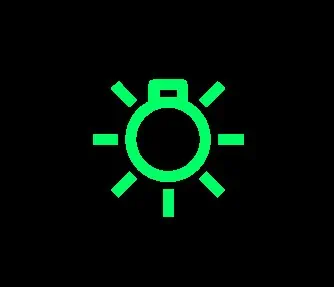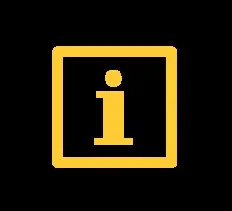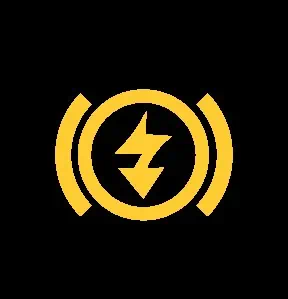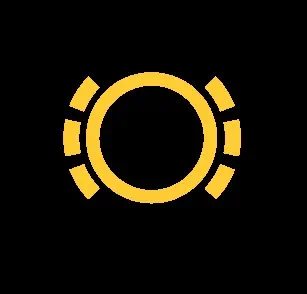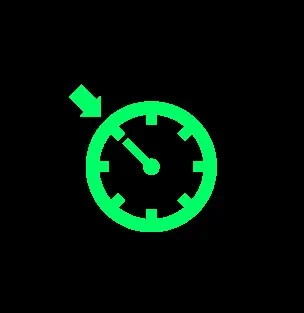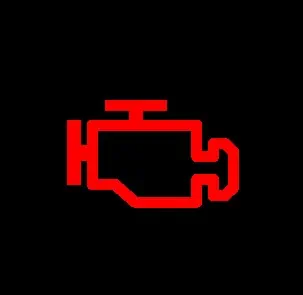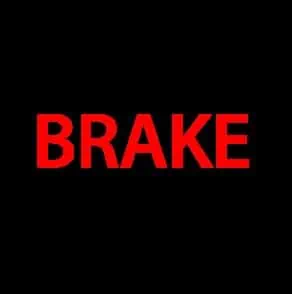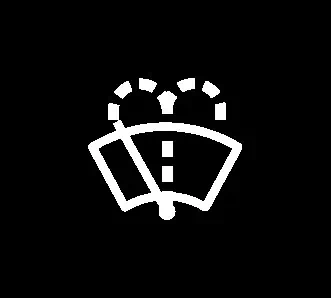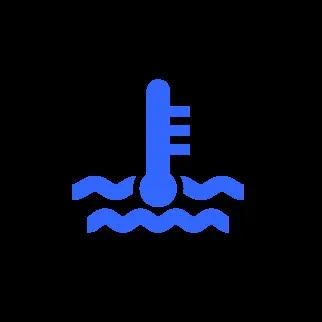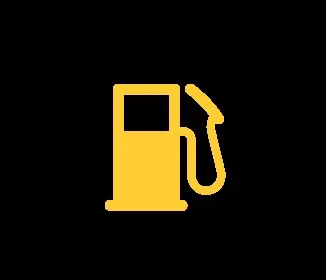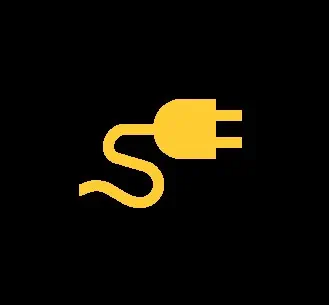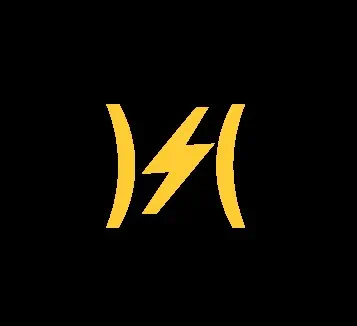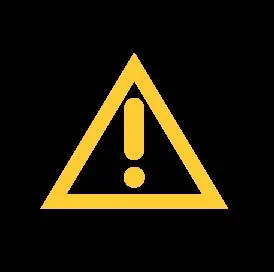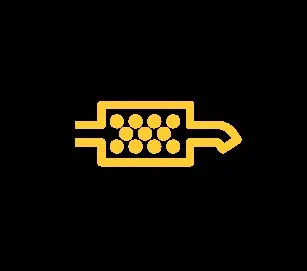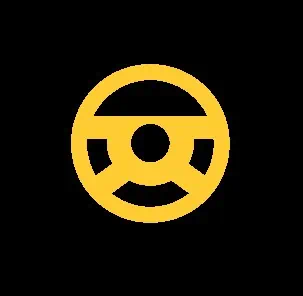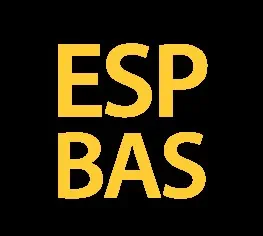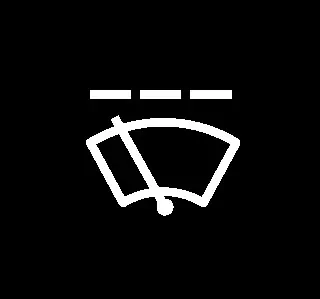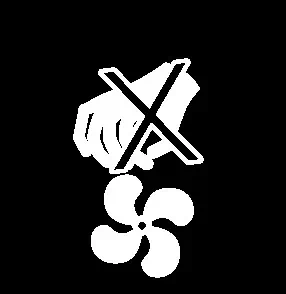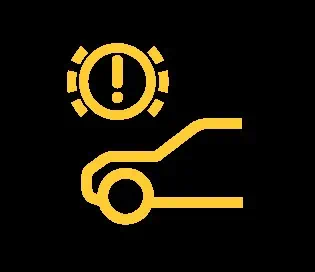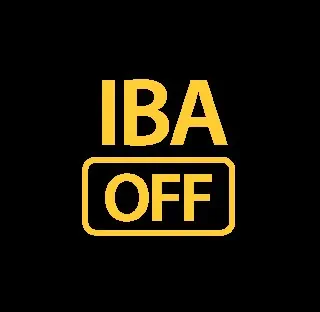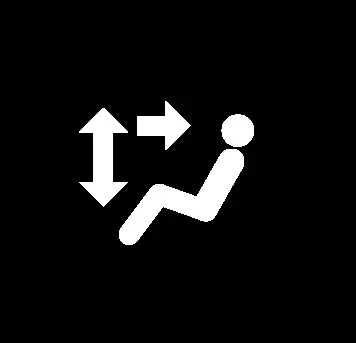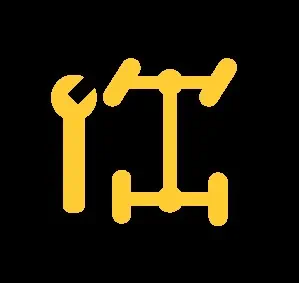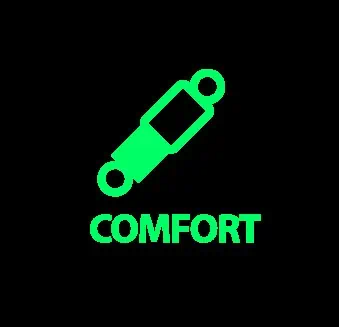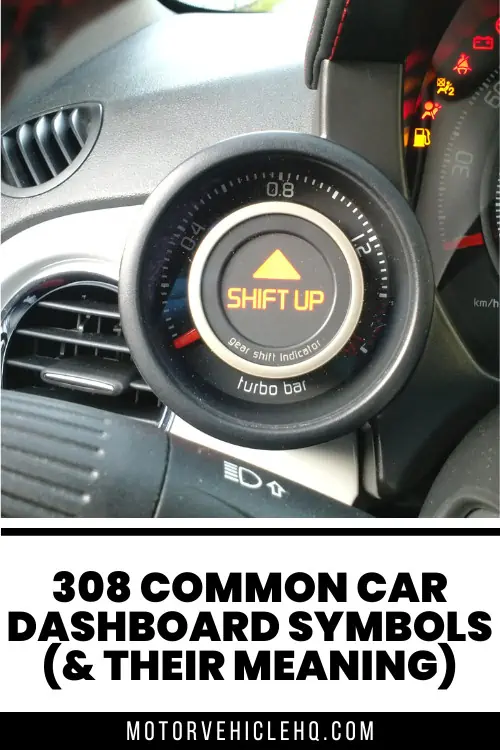Car dashboard symbols and indicators provide you with time-sensitive information about your car’s present state. By being aware of these symbols and indicators, you can avoid accidents and costly repairs down the road.
Many dashboard symbols and lights are specific to certain car brands, but others can be seen on most models. When it comes to dashboard lights, colors matter – a red and/or flashing light means danger and needs to be addressed immediately, while a yellow or orange light generally signifies that your vehicle needs to be serviced or repaired soon. A green or blue light simply lets you know that the system is on or operating.
In his article, we will go over ninety common car dashboard symbols and meanings. Understanding what these lights and symbols mean will make you better informed the next time a warning light pops up on your dashboard.
As you read through this list, keep in mind the following:
- Every car is unique, so the symbols on your dashboard may vary slightly from the ones on our list. If you’re unsure of the meaning of any symbol or indicator, we advise that you consult your vehicle’s owner’s manual.
- Many of these dashboard indicators will light up briefly to perform a systems check when you start your vehicle. If the light goes off within a few seconds, everything is operating normally.
The common car dashboard symbols and meanings outlined below can be found on the dashboard for most makes and models of cars, trucks, buses and motorbikes. You will learn which symbol requires immediate attention and which requires a visit to the mechanic.
Check your car’s dashboard indicators for the following warning lights as they are essential to identify your car’s potential problem, safety issues or immediate failure points.
1. Engine Temperature Warning Light
An engine temperature warning light means the engine temperature has exceeded the normal limits. Check coolant level, radiator cap, fan operation, and coolant leaks.
2. Battery Charge Warning Light
A battery charge warning light means the car’s charging system is not charging properly, and your engine is at risk of shutting down due to low battery capacity.
3. Oil Pressure Warning Light
An oil pressure warning light means a loss of oil pressure in the engine. Switch off your engine immediately to avoid damage and check the oil level and pressure.
4. Brake Warning Light
A brake warning light turns on when the handbrake is on. If it’s lit continuously, it indicates an issue with the brake system. This should be checked immediately; otherwise, you may lose your brakes.
5. Transmission Temperature Warning
A transmission temperature warning light means the transmission or engine temperature has exceeded normal limits. Check coolant level, fan operation, radiator cap, and coolant leaks.
6. Tire Pressure Warning Light
A tire pressure warning light means the pressure is low in one of your tires. It can also be triggered by a faulty or uncalibrated tire pressure sensor.
7. Traction Control Off
The traction control off light means that the vehicle’s TCS (traction control system) has been deactivated or manually switched off.
8. Steering Wheel Lock
A steering lock warning light means that the steering wheel is locked and cannot be moved or that the car key is not recognized. To turn off the steering lock, insert the key into the ignition and turn it to at least the ON position while turning the steering wheel.
9. Trailer Tow Hitch Warning
The Traction Control Light turns on when the vehicle TCS (traction control system) is switched on or activated.
Trailer Tow Hitch Warning lights mean that the tow hitch is unlocked or that there’s a problem with the lighting system.
10. Traction Control Light
11. Service Vehicle Soon
The Service Engine Soon light indicates an issue with the vehicle chassis systems, such as – the anti-lock (ABS) brake system, the traction control (TCS) system, the electronic suspension system, or the brake hydraulic system.
12. Security Alert
The Security Alert light will turn on temporarily if the ignition switch is locked and will require the correct transponder-equipped key to restart. If the light comes on when the vehicle is running, it means there’s a malfunction in the security system.
13. Side Airbag Warning Light
A side airbag warning light means the side airbags are turned off, or there’s a fault with the side airbags.
14. Reduced Power Warning
A reduced power warning light means that the Engine Computer has limited engine power output and that there is an issue with the engine.
15. Seat Belt Indicator
A seat belt symbol indicates that a seat belt has not been secured for a passenger in the vehicle or there is an issue with the system. Check both the driver and passenger sides and the rear seats on some car models.
16. Press Clutch Pedal
A press clutch pedal light is an indicator to push the clutch.
17. Powertrain Fault
The powertrain fault light turns on when a fault in the powertrain or drivetrain system like the 4WD or AWD has been detected. Contact your mechanic immediately.
18. Power Steering Warning Light
A power steering warning light means the power steering fluid level is low, or there is an issue with the power steering system and will be disabled until fixed.
19. Press Brake Pedal
A press brake pedal light is an indicator to press the brake pedal.
20. Parking Brake Warning Light
A parking brake light illuminates when the parking brake is engaged, or there is an issue with the parking brake system. On automatic-gear vehicles, lights up when you shift the gear position to park. (P)
21. Overdrive Light/ Overdrive Off Indicator
An overdrive-off symbol means the automatic transmission overdrive system has been manually switched off.
22. Oil Change Reminder
An oil change indicator light means that oil life has expired.
23. Master Warning Light
A master warning light is usually accompanied by another warning light and means that one or more warning systems have been detected. Let a mechanic check it out.
24. Information Warning Light
An information warning light will turn on when a new message is stored in the information display. It indicates an issue with your car, and it is usually red or yellow in color, depending on the message’s severity. The light will stay on until the issue has been rectified.
25. Icy Road Warning Light
An icy road warning light turns on when the outside air starts to reach freezing temperatures, around 35°F or 3°C, and there is a risk of an icy road.
26. Gas/Fuel Cap
The gas/fuel cap light is illuminated if the gas/fuel cap is not correctly tightened.
27. ESP Fault/Traction Control Malfunction
An ESP or Traction control light indicates an issue with the vehicle’s traction control system. The traction control system will not work when the light is on – Danger.
28. Electric Park Brake Fault Indicator
An electric park brake light turns on when the electric parking brake is malfunctioning.
29. Distance Warning
A distance warning indicates the front radar detected that a vehicle in front is too close or is being approached too quickly. It could also mean that a stationary obstacle lies in the direction of travel.
30. Clogged Air Filter
A clogged air filter light turns on when there is reduced airflow to the engine. Check the air filter and replace it if necessary.
31. Child Safety Lock
The child safety lock indicator means the child safety lock is activated.
32. Check Engine or Malfunction Indicator Light (MIL)
This indicator appears whenever the engine is turned on to check the bulb. If the light stays illuminated, it means there’s an issue with the engine or the emissions, or the car’s diagnostic systems have detected a malfunction that needs to be investigated.
33. Catalytic Converter Warning
A catalytic converter warning light indicates the catalytic converter control system is either overheating or not operating as intended.
34. Brake Fluid Level Warning
A brake fluid level warning light means that the brake fluid level is too low or there is an issue with the measurement system.
35. Brake Pad Warning
A Brake pad warning light means that the brake pads are worn and need to be replaced.
36. Brake Lights Warning
A brake light warning indicates an exterior brake light bulb is defective. Check the operation of all the exterior brake light bulbs.
37. Automatic Gearbox Warning
An automatic gearbox warning light means there’s a gearbox or automatic transmission system malfunction.
38. Anti-lock Braking System (ABS)
An ABS light means there may be a malfunction with your anti-lock brakes or anti-lock braking system (ABS).
39. All Wheel Drive (AWD/4WD)
An All Wheel Drive indicator light turns on when there is a malfunction with the AWD or 4WD system.
40. Airbag Indicator
An airbag light turns on when the front airbag is switched off. If this indicator lights up or flashes, it means there is an issue with the airbag or supplemental restraint system, and the airbags will not deploy in an accident with the light on.
41. Airbag Deactivated
The airbag deactivated light turns on when there is a fault in the rear spoiler system.
42. Adaptive Suspension Dampers
The adaptive suspension dampers symbol means there is a need to contact an authorized repairer.
43. 4 Wheel Drive (4WD) LOCK Indicator Light/ 4WD Engaged Indicator
A 4WD engaged symbol means that the vehicle’s four-wheel-drive system is activated.
44. Air Suspension Warning
An air suspension warning symbol means an issue with the air suspension system, likely due to a leak or inflation issue.
45. Low Beam Indicator Light
A low beam indicator light means the vehicle’s low beam headlights are turned on.
46. Lamp Out
Lamp-out indicator light means that an exterior light on the vehicle is malfunctioning.
47. High Beam Light Indicator
A high beam light symbol means your car’s high beam headlights are turned on or that the high beam flash function is in use.
48. Headlight Range Control
A headlight range control warning light indicates an issue detected with the headlight range control system.
49. Front Fog Lights
A front fog light symbol appears when the front fog lights are turned on.
50. Exterior Light Fault
An exterior light warning light means one or more exterior lights aren’t working, usually faulty light bulbs.
51. Auto High Beam Lights
An auto high beam lights symbol means the Auto High Beam system has turned on high beam headlights.
52. Adaptive Light System
The adaptive light system indicates that the adaptive headlights are turned on.
53. Side Light Indicator
The side light indicator will turn on when the normal headlights are in use.
54. Rear Fog Lights Switched On
A rear fog light symbol means rear fog lights are turned on.
55. Rain and Light Sensor
Rain and light sensor indicator mean there is an issue with the sensor system. The wipers and lights will not function automatically.
56. Windshield Defrost Indicator
The symbol consisting of wavy lines intersecting an upside-down curved trapezoid (to represent the front windscreen) is the windscreen defrost function. Activating this will trigger the vents at the base of the windshield to expel hot air, gradually warming the glass and eliminating condensation and frost to defog your cars windscreen.
A windshield defrosts symbol indicates that the windshield defrost is in operation.
57. Washer Fluid Reminder/ Low Washer Fluid Light
A washer fluid symbol means that the windscreen washer fluid reservoir is nearly empty or an incorrect measuring system.
58. Rear Window Defrost
A rear window defrost symbol means that the rear window’s defroster is in operation.
59. Low Fuel Level
A low fuel level symbol means that the car is running low on fuel and will soon need a refill, or there is an issue with the fuel level measuring system.
60. Key Not in Vehicle Indicator
A Key Not in Vehicle Indicator light means the key is not in the car, or the car’s immobilizer system can’t reach or recognize your car key.
61. Hood/Bonnet Open
A hood/bonnet open symbol means that the car hood is not closed properly or there is an issue with the bonnet lock switch.
62. Hazard Lights On
A hazard lights symbol means that the hazard lights are turned on.
63. Fan
The fan indicator light means the internal ventilation/fan is in operation.
64. Door Ajar
A door ajar symbol indicates that one or more doors of the car are not shut properly, or there is an issue with the door switch system.
65. Direction/Signal Indicators
The direction/signal indicator light shows up when one of the turn signals (left or right) has been activated.
66. Car on Ramp Mode
A car on ramp mode warning symbol means that the vehicle is on a ramp/jack system or when the repair mode is activated.
67. Recirculated Cabin Air
A recirculated cabin air symbol means that the vehicle’s ventilation system is recirculating air from within the vehicle instead of taking air from outside the car. Suitable when the weather is cold outside.
68. Rear Spoiler Warning
A rear spoiler warning light indicates a fault in the rear spoiler electric system.
69. Parking with Park Assist Pilot
The Park Assist Pilot light means PAP (Park Assist Pilot) is activated.
70. Lane Departure Warning
A lane departure warning light indicates the vehicle is detected to be moving out of its current lane without signaling.
71. Lane Assist
A lane assist light turns on when the lane assist system is switched on, and road markings can be detected.
72. Key Fob Battery Low
The key fob battery low symbol prompts you when your key fob battery needs to be changed and replaced.
73. Ignition Switch Warning
An ignition switch warning symbol means there is an issue with the ignition switch system or the car key. It could be due to a glitch or worn-out key.
74. Hill Descent Control
A hill descent control turns on when the hill descent system is activated and helps you maintain a specific speed while driving down a hill.
75. Forward Collision Warning
A forward-collision warning light turns on when a potential collision is detected.
76. Eco Driving Indicator
An ECO Driving Indicator light will turn on when the Economy system function is activated.
77. Cruise Control
This indicator light means the cruise control system is activated.
78. Convertible Roof Warning Light
A Convertible Roof Warning Light indicates that the convertible roof system is opening or closing. If the light stays on continuously, it means the roof is not fully opened or the system has a fault.
79. Brake Hold Indicator Light
This indicator light means that the brake hold system is functioning properly.
80. Blind Spot Indicator Light
The blind spot indicator light turns on when a vehicle or obstruction is detected in the blind spot.
81. Auto Windscreen Wiping
The auto windscreen wiping light means the windscreen wipers are in operation on Automatic mode.
82. ABS Warning Light
If the dashboard lights up and says “ABS,” the ABS warning light has turned on. This indicates that the ABS brakes or the brake assist system is malfunctioning. If the light is on, the brake assist system may have been deactivated, which can make the vehicle tougher to stop if you must brake quickly. If the light remains on the next time you turn the key, our service center will find the root of the brake issue.
83. Adaptive Cruise Control
The adaptive cruise control light means that the ACC (Adaptive Cruise Control) is in operation.
84. Winter Mode
This indicator light lets you know you’re driving in winter mode.
85. Start/Stop Warning Light
This warning light prompts the driver that the Intelligent Stop / Start system is activated and the engine has been shut down.
86. Speed Limiter
This indicator light means that the speed limiter function is activated.
87. Heated Seat High
A heated seats on symbol indicates that one or more seats’ heating system is turned on.
88. Glow Plug Indicator
A glow plug symbol indicates that the engine’s glow plugs are warming up, and the engine should not be started until the light goes out. If it flashes, an issue has been detected with the glow plugs or the glow plug control system.
89. Fuel Filter Warning
A fuel filter warning light means that the diesel fuel filter is full and needs to be emptied to avoid engine damage.
90. Exhaust Fluid
An exhaust fluid warning light means that the diesel exhaust fluid level is low in your diesel car.
91. Engine Temperature Warning Light
It is also known as coolant temperature warning light. This light means that your engine is overheating and can lead to engine damage if not resolved immediately.
Driving your car when it is overheating can cause severe or permanent damage to your engine. Pull over immediately, shut off your engine and wait for the engine to cool down.
92. Check Engine Warning light
A red engine management light means it’s time to pull over and call your breakdown service.
93. Check Engine Light
The check engine light can mean many different things, from a loose gas cap to a seriously misfiring engine.
If the check engine light illuminates, it will either blink or remain constantly illuminated, depending on the problem. A blinking light, or in some cars a red light instead of a yellow or orange light, indicates a problem that needs immediate attention. Either way, you should have the vehicle checked by a mechanic.
94. Master Warning Light (Danger)
A red triangle with an exclamation point on your car’s dashboard is the master warning light. This light comes on when there is at least one problem with one of your car’s advanced systems. Within your vehicle’s information display, you’ll likely find additional information about the cause of the problem.
95. Master Warning Light (Caution)
A buzzer sounds and the warning light comes on and flashes to indicate that the master warning system has detected a malfunction.
The red triangle with an exclamation mark signifies danger and the amber triangle with an exclamation mark signifies a warning. These symbols may light up along with other specific symbols. Igniting warning lights may result in personal injury or damage to the vehicle.
96. Open Door Warning Light (Warning Buzzer)
Indicates that a door or the trunk is not fully closed. Check that all the doors and the trunk are closed properly.
97. SRS Warning Light
This dashboard light indicates a malfunction in any or all of the following:
- The SRS airbag system;
- The front passenger occupant classification system; or
- The seat belt pre-tensioner system
Have the vehicle inspected by your car dealer immediately.
98. Slip Indicator
This dashboard light indicates a malfunction in any or all of the following:
- The VSC (Vehicle Stability Control) system;
- The TRAC (Traction Control) system; or
- The hill-start assist control system
The light will flash when the VSC or the TRAC system is operating. Take the vehicle for inspection by your car dealer immediately.
99. Brake System Warning Light
This dashboard light signifies any of the following:
- It’s a warning light to show that the handbrake is ON.
- The brake fluid level is low; or
- The brake system is malfunctioning
This light also comes on when the parking brake is not released. If the light turns off after the parking brake is fully released the system is operating normally. Immediately stop the vehicle in a safe place and contact your car dealer. Continuing to drive the vehicle may be dangerous.
100. Security and/or Immobilizer System Indicator Symbol
This green key-shaped light is the Immobilizer System indicator. It will flash when the vehicle is immobilized.
101. LAMBDA Sensor Warning Light
The symbol signifies that the exhaust gas oxygen sensor is dirty or inoperative. The vehicle should not be driven for any length of time in this condition as this sensor is key to controlling the oxygen-to-fuel ratio in your engine.
102. Vehicle Dynamic Control Warning Light
The vehicle dynamic control light looks like a car inside a triangle with some tracks behind it. If this light is flashing, it typically means that the system is engaged and working. However, if the light remains on, you may have an issue. Take your vehicle to your dealer or authorized service centre as soon as possible to ensure this essential system continues to work properly.
103. Security Indicator Warning Light
The security indicator is white and contains a key inside a car. This light will blink whenever the ignition switch is in the Lock, Off, or ACC position. This warning light is a normal sign and simply lets you know that the that the alarm and the immobilizer system is active.
If the Security Indicator Light is on steady with the key in the “run” position, and the vehicle won’t start, there could be a fault with the system. In this case, you will need the proper transponder-equipped key fob to start or re-start. The vehicle is immobilized otherwise. You can find more information about your vehicle’s security system in your owner’s manual.
104. Low Windshield Washer Fluid Warning Light
One of the least worrying indicators you can get is the one for low windshield washer fluid. This one is shaped like your windshield with some water spraying from the top of it. Simply refill your windshield washer fluid, and you should be good to go.
105. Engine Temperature Warning Light
This dashboard light indicates that your engine is too hot and might be causing damage. Take your vehicle to your dealer or authorized service center as soon as possible.
106. Fog Light Indicator
Your fog lights are on.
107. Low fuel level warning light
You are running low on fuel. Please pull over and get some gas!
108. Trunk Is Open
Your trunk is open.
109. Rear Window Defroster
Your rear window defroster is on.
110. Low Battery Charge Warning Indicator Symbol
The vehicle is low on battery power and might simply stop. This indicator light will appear when your battery is between 10%-20% and start to flash at 5%. Head to the nearest electric car charging station to recharge.
111. EV Charging Indicator
This light will be illuminated or blinking while the vehicle’s main battery is being charged and will turn off when it is fully charged.
112. Automatic Transmission Temperature High
113. Oil Dangerously Low Warning Light
This symbol signifies that the engine’s oil level has dropped to its minimum level for safe operation. Add some oil as soon as you can to prevent major damage.
114. Headlight Bulb Issue
One or more of the headlamp bulbs is burned out or malfunctioning.
115. Windshield Wipers
Windshield wipers are on. Is it raining?
116. Oil Level Warning Light
An oil level warning light is the oil can with a wavy line under it and it indicates the oil level is low.
117. Electric Vehicle (EV) Operation Indicator
This is the Electric Vehicle (EV) Operation Indicator symbol. Most hybrid vehicles give the driver the option to choose to use only the electric motor, at least in special situations. This symbol will appear on the instrument panel when a switch – likely showing the same symbol – is activated.
118. Side Airbag Is Not Working
This is a Side Airbag Off Indicator symbol. It is typically found in vehicles sold in Canada. It shows a man in a seat belt next to an oval airbag with an X through it.
119. Electronic Throttle Control Indicator
Electronic Throttle Control (ETC) – This light, a lightning bolt between brackets, will illuminate if there is a problem in the electronic throttle control system. The vehicle should be drive-able but take it to your dealer or authorized service center as soon as possible.
120. Low Brake Pad Warning Light
Some vehicle manufacturers include this symbol, which means that your vehicle’s brake pads are worn, or low & need servicing. Your brakes may also pulse or squeak as a warning when the brake pads are low.
121. Low Coolant Light
The cooling system is low on fluid, with or without the arrow. You should take it to your dealer or authorized service center to have the system serviced as soon as possible.
122. Towing Symbol
If your vehicle has tow mode this will be lit when engaged.
123. Your Vehicle Recognizes Your Key
Electronic Key symbol in green indicates that the key is found and the vehicle can be started. Some manufacturers will have the light flash in green to indicate a weak internal battery.
124. Your Vehicle Is Not Recognizing Your Key
The flashing red Electronic Key symbol indicates that the key is not detected. If the Key is in the vehicle, its internal battery is likely dead and needs to be replaced. You should take your vehicle to your dealer or authorized service center as soon as possible.
125. Shift Indicator
You need to shift to the next gear
126. 4X4 is on AUTO
The 4X4 is on Auto
127. 4X4 High is ON
4X4 is on and in high for higher speeds for snow or slippery conditions.
128. 4X4 Low is Engaged
4X4 is in low range which is for low speeds and getting out of bad conditions. It is useful when maximum power or traction is needed for steep climbs, sandy or muddy conditions, or off-road driving.
129. Daytime Running Lights
This symbol signifies that the daytime running lights are turned on. They are typically used to make your car more visible to drivers and pedestrians.
130. Center Differential Lock Indicator
The light means that the center differential is locked and power is being distributed evenly to all wheels.
131. Electronic Rear Differential Indicator
This symbol uses an X in place of the closed circle and is an Electronic Rear Differential Lock indicator. It indicates that the two rear wheels have been locked to rotate together.
132. High Voltage Battery Charge Indicator
This symbol is found in plug-in hybrid vehicles. It means the charge is low and you need to charge it as soon as possible. It also means that your electric car has an electrical fault due to a faulty battery, motor or wiring.
If the light is amber, take your electric car to a workshop as soon as possible. If it is red, pull over when it’s safe and seek professional assistance.
133. Power Limit Indicator
This symbol is used only on Electric vehicles. This tells the driver what he or she likely already knows: that the vehicle is less responsive than expected. You should take it to your dealer or authorized service center as soon as possible.
134. Economy Operation Symbol
This symbol indicates that the vehicle’s economy mode is active. Your vehicle will try to improve your driving habits and increase fuel economy. You will experience a dip in overall performance for increased efficiency and distance. Continue driving normally. Or turn it off if you have pressed this button by accident or if you need speed.
135. Stability Control System Fault
This symbol in yellow or amber has been used by European manufacturers to indicate a fault in the vehicle’s Stability Control System. The vehicle can be driven with caution without an advanced electronic control system.
136. Oil Level is Low
Don’t drive this without putting oil in your car, you can do damage if you do. Take it to your dealer or authorized service center as soon as possible.
137. Hybrid Battery or Charging Issue
If Main is seen beneath the battery image, the light is actually a Hybrid Battery Trouble Indicator. The vehicle’s hybrid battery must be serviced by an authorized service center as soon as possible.
138. Ready to Drive Warning Light
Unlike a standard petrol or diesel car, a hybrid or electric vehicle will be virtually silent when starting up. To avoid any confusion, this light simply informs you that your car is ready to be driven, so there is no cause for concern.
139. Traction Control Malfunction Light
This light indicates that your vehicle’s traction control system might have a broken or damaged sensor or some other malfunction. In some cars, the same control module operates the anti-lock (ABS) brake system and the traction control system, so sometimes this dashboard light comes on when there are problems with your ABS.
While this won’t affect your everyday driving, you should get it checked soon to make sure your vehicle will operate safely in inclement conditions.
140. Transmission Electronics Fault Indicator
This indicator light points to a problem with the engine or transmission electronics. The vehicle may default to an emergency operation mode, which provides an opportunity to bring it to your dealer or qualified service center under its own power.
141. Distance Warning
Indicator light means that a vehicle in front is too close or is being approached too quickly, or that a stationary obstacle exists in the direction of travel.
142. Diesel Particulate Filter (DPF)
This symbol represents the Diesel Particulate Filter (DPF). It indicates that the soot level from the diesel exhaust is high and your vehicle is likely to go into limp mode. Do not ignore this light. This filter could block and lead to costly repairs.
Refer also to your manual to establish how to regenerate. A manual regeneration procedure involves driving at 50 mph (80 kph) long enough for the light to resolve. There are also recommendations to hold the rpm above 2,000, so a lower gear may be needed, and another that calls for intermittently releasing the accelerator for a few seconds.
143. Key Not in Vehicle
Indicator light means the key is not in the car.
144. Water in Fuel Light
This indicator light means that the diesel fuel filter is full, and needs to be emptied to avoid engine damage. Water may have made its way through the vehicle’s separators used to remove water from the fuel.
If the Water in Fuel Light is shown, be aware that your fuel may be contaminated and your engine should be switched off as soon as possible. Your water filters should be serviced in order to solve the issue.
145. Electric Power Steering Warning Light
This symbol indicates a fault with the steering system. Your power assisted steering could fail, your vehicle needs immediate attention. If the light turns red please do not drive.
146. Electric Power Steering Warning Light (Danger)
This symbol indicates a malfunction with the steering system. Do not drive the vehicle. Call a professional repair service immediately.
147. Sport Mode Light
This symbol indicates that your car is in Sport Mode. While in Sport Mode, your vehicle will respond quicker when the gas pedal is pressed. The engine revolutions per minute will increase, the steering will feel tighter, and your traction controls will change.
148. Keyless Ignition Detection Indicator
This symbol which appears as an open padlock with lines radiating away in yellow/amber is used to indicate that the proper key fob has not been detected. Its internal battery may be dead and needs to be replaced.
149. Brake Fluid Non-Petroleum Base
This symbol specifies the characteristics and the test methods for the non-petroleum base brake fluid used in the hydraulic brake systems. The brake fluid described is for use in brake systems equipped with seals, cups or double-lipped type gland seals made from natural rubber, styrene-butadiene rubber, and ethylene-propylene elastomer.
150. Service Key Wrench OBD Icon
The yellow wrench light symbol is a maintenance interval reminder.You need to make sure your maintenance is completed on time! Failure to perform scheduled maintenance by certain mileage intervals can lead to serious mechanical problems and/or loss of the existing vehicle warranty.
While easy to do, resetting your wrench light without proper service could spell disaster! You should take your vehicle to your dealer or authorized service center for proper checkup and maintenance as soon as possible.
151. Heated Seat Low
This indicator comes on when the button is depressed to warm the seats at a low temperature.
152. Adaptive Cruise Control
The adaptive cruise control (ACC) indicator light helps keep your car at a safe speed while driving by sensing the distance of the car ahead of you.
Once activated, the adaptive cruise control will let you select a predetermined distance from vehicles in front of you. The computer will apply the brakes to slow down your car and will warn you with an audible chime, flashing lights, or a combination of the two if it detects that the space ahead of you is narrowing.
The brakes won’t be applied with full force, so you should be prepared to step on the brakes yourself if necessary. The system will slow down your car and speed it back up if the gap widens as long as the speed difference isn’t too significant.
153. Reverse Gear Indicator
This symbol indicates the reverse gear. When you engage the reverse gear, the reverse/backup light turns on.
154. Neutral Gear Indicator
This symbol indicates the neutral gear. In automatic transmission systems, the neutral gear separates the engine from the wheels. The pedal won’t route power to the wheels, but you’ll still be able to turn their direction with the steering wheel.
155. Drive Gear Indicator
This symbol indicates the driving gear. When you put your transmission in drive, your car is able to move forward.
156. Park Gear Indicator
This position on your gear selector literally parks your vehicle. The ‘P’ can often be found on the top-most part of your lever.
157. Key Fob System Malfunction
This symbol is used to indicate a fault with the keyless ignition system. Disconnect the battery. Leave it for an hour. Reconnect battery. Lock and unlock via remote, open car, start car and see what happens. If nothing works, you will need to call a professional repair service to take a look at it.
158. Electronic Power Control Malfunction
The Electronic Power Control (EPC) warning light indicates a problem with your vehicle’s throttle system, which could include the accelerator pedal, fuel injection throttle body, traction control, cruise control, or other systems.
159. Electronic Stability Program / Brake Assist System
The Electronic Stability Program (ESP) / Brake Assist System supports the driver in almost all critical driving situations. It comprises the functions of the antilock braking system (ABS) and the traction control system, but can do considerably more. It detects vehicle skidding movements, and actively counteracts them. This considerably improves driving safety.
160. Windshield Wiper Intermittent
This symbol represents the windshield wiper intermittent. Intermittent windshield wipers operate in timed intervals rather than constantly.
161. Rear Window Intermittent Wiper
This symbols signifies the rear window intermittent wiper. It is the control that intermittently, at specified time intervals, operates the wiper that clears water from the rear window.
162. Windshield Electrically Heated
This symbol identifies the control that activates electrically heated wires that heats the windscreen and help clear up condensation.
163. Rear Window Washer Light
This symbol indicates that the rear window washer is in operation.
164. Supplemental Restraint System
The Supplementary Restraint System (SRS) is basically an air-bag system. The purpose of the SRS indicator light on your instrument panel is to alert you of a potential problem with your supplemental restraint system. If you notice this light on your dashboard have the supplemental restraint system checked as soon as possible. Otherwise, your air bag might not inflate when you need it.
165. Liftgate Release and Liftgate Open
This symbol indicates that the liftgate or back door is open. The liftgate also unlocks when you press the liftgate release button.
166. Sliding Door Indicator
This symbol indicates that the sliding door is not fully closed. Check that the sliding door is shut properly.
167. Upper and Lower Air Outlet
This symbole identifies the control that allows air to flow from the upper and the lower air outlets. It indicates that air is flowing from the upper and the lower air outlets.
168. Upper-Air Outlet
This symbol identifies the control that allows air to flow from the upper air outlets. It indicates that air is flowing from the upper air outlets.
169. Lower Air Outlet
This symbol identifies the control that allows air to flow from the lower air outlets. It indicates that air is flowing from the lower air outlets.
170. Instrument Panel Illumination
An instrument panel light switch is the one responsible for controlling the light on your dashboard or your instrument panel. When your vehicle’s parking lights or headlights are on, push the illumination control switch left or right to adjust the brightness of the instrument panel.
171. Key Activate (Power Outlet)
This symbol indicates that the key must be in the ON/RUN or ACC positions for the outlet to provide power.
172. Dome Light
This symbol indicates the dome light, which is any light that serves to illuminate the cabin or interior of the vehicle. It is usually located on the ceiling of the vehicle and illuminate when people enter or exit the car. The lighting normally stays lit until the vehicle is turned on so the passengers can safely fasten their seat belts.
173. Heated Mirror Indicator
This symbol signifies the heated mirror indicator. It works by supplying heat to the mirror, which then melts snow or ice, improving your visibility.
174. Four Wheel Drive ON Light
The four wheel drive light means your car has activated four wheel drive. When the light flashes continuously for more than 30 seconds it signifies there is a problem somewhere on your drivetrain system and that 4WD has not engaged properly. Once the 4WD mode is engaged successfully, the 4×4 light will shine a solid color, usually orange or green.
175. All Wheel Drive ON Light
The All Wheel Drive Light indicates that AWD is enabled and active on the vehicle. AWD allows a vehicle to always operate in four-wheel drive and will not alternate with two-wheel drive.
176. Air Conditioner
This dashboard symbol indicates the air conditioning switch. Push the A/C button to operate the air conditioning. The indicator light will come on. Push the button again to turn off the air conditioning.
177. LATCH (Lower Anchors and Tethers for Children) System
This symbol indicates the LATCH System. LATCH (Lower Anchors and Tethers for Children) is an attachment system that allows you to install a car seat without using seat belts.
178. Child Seat Tether Anchor
THis symbol indicates the child seat tether anchor. It is the strap with a hook hanging on the back, at the top of your child’s car seat. When attached and tightened to one of the vehicle’s tether anchors, a tether helps keep a forward-facing car seat from tipping forward. Find the tether anchor then attach the hook on the tether strap to it and tighten.
179. Voice Recognition Button
This symbol activates the voice control system. Voice control lets you operate a car’s functions through voice commands instead of using the physical buttons on the dashboard.
180. Door Lock
This symbol indicates the car central lock button which shuts the lock on all doors of your vehicle.
181. Window Lock
This symbol indicates the button that operates the car windows. When switched on, the driver gets full control on which windows can be opened or closed even when passengers press the door’s respective buttons.
182. Left Window Lift
This symbol indicates the button for the left window lift. When pressed, it ensures comfortable opening and safe closing of the left window.
183. Right Window Lift
This symbol indicates the button for the right window lift. When pressed, it ensures comfortable opening and safe closing of the right window.
184. Convertible 4 Windows Down
This symbol indicates the convertible 4 windows down button. It is only present in convertibles and works by instantly lowering your car windows when pressed.
185. Emergency Release Handle
This symbol indicates the emergency trunk release. The Emergency Trunk Release is a glow-in-the dark pull handle located inside a car’s trunk that permits escape for someone trapped inside.
186. Lighter Indicator
This symbol indicates your Car Cigarette Lighter. When pushed the button activates the coil which lights your cigarettes.
187. Horn Indicator
This symbol indicates the car horn switch. The car horn switch will be lighted up when it is in use, and it shines on itself after you close your vehicle.
188. AdBlue Tank Warning Light
This dashboard light signifies that the AdBlue (diesel exhaust fluid) tank is low or the system is malfunctioning.
189. AdBlue Level Low
No engine restart is possible because the system has failed or the fluids are too low. Park the vehicle safely in a suitable, level place. Top up AdBlue minimum fill quantity.
190. Doors Open Warning Light
The Door Open Warning Light is located on the instrument panel. When one or more of the doors is not entirely closed, then the Door Open Warning Light will turn on. When the vehicle is in motion and one of the doors is not properly closed, then a beeper will sound in addition to the illuminated light.
Tip: Like all warning lights, the Door Open Warning Light briefly illuminates when the car is turned on. The light is only a problem if it stays lit when the engine is on.
191. Parking Brake Error
This light is the parking brake warning light. Depending on the make of the vehicle, it can be either red or orange. It illuminates to show that the parking brake or emergency brake is engaged and must be released before driving.
If it remains lit after the parking brake is released or if it turns on and off intermittently while you’re driving, it means you need to add brake fluid. If you check the fluid, add as needed and the light still doesn’t turn off, you’ll need to have the brake system inspected.
192. Low Coolant Warning Indicator
The shape of this symbol is meant to resemble a radiator and the wavy lines at the bottom indicates fluid level. When it comes on, it usually means the coolant level is low. Topping off the cooling system fluid — while the engine is cool — may resolve the issue.
193. Explosive Gas Warning Light
The Explosive Warning Symbol is used to indicate a potential hazard or risk associated with gas or explosive substances.
194. See Owner’s Manual
The presence of this symbol on your dashboard info screen is an alarming message that is notifying you of a potential problem that can cause damage to your car. Do not ignore this warning light.
195. Manual Indicator Light
The Manual Indicator Light illuminates on your dashboard when you are advised to reference your car’s owner manual. Normally there is text to go along with the image to indicate what to do.
196. Cabin Air Filter
This is perhaps the most common signal associated with a faulty cabin air filter. You need to repair or replace the filter whenever you notice any problem in it.
197. Fuse Compartment
This symbol indicates the fuse compartment or fuse box. The fuse box houses the fuses and relays to prevent damage from water, weather, and other driving conditions.
198. Fan Warning
This symbol indicates that the internal ventilation/fan is in operation. The vehicle users should thus proceed with caution to avoid getting hurt.
199. Power Window Lockout
This symbol indicates the Power Window Lockout. The Power Window Lock controls the lock-out feature for the passenger windows.
200. Power Windows Front and Rear
This symbol indicates the Power Windows Switch. Power windows are windows in a vehicle which are raised or lowered by an electric motor operated by a button or switch.
201. Avoid Smoking, Flames, or Sparks
This symbol denotes the no smoking, flames, or sparks warning light. It is a danger sign that warns of the hazards of smoking, open flames or sparks in a given area.
202. Maintain Correct Fluid Level
This symbol indicates the car’s correct fluid level. It is useful for checking and maintaing your car’s fluid levels.
Cars use various fluids to ensure they run smoothly and safely. These fluids include engine coolant, brake fluid, windscreen washer fluid and power steering fluid. The all have to be periodically checked to ensure that they are up to the correct level or need be topped up.
203. Panic Alarm
This symbol indicates the panic button. It is typically embedded in the dashboard. You can also use your car’s key-chain remote emergency button alarm (or panic button) in a parking lot or parking garage to help ward off predators
204. Power Steering Fluid
This warning light indicates that the power steering fluid is low. The power steering fluid lubricates the moving parts within the steering system. You will have to top up the fluid level.
205. Jack Indicator
This symbol indicates the jack mode warning light. The jack mode warning light lets you know when your car is suspended at a certain height, which may make it easier to perform service or repair.
206. Do Not Open When Hot
This warning symbol indicates Do Not Open When Hot. Opening the coolant overflow cap when hot will depressurize the cooling system.
207. Engine Air Filter
This is a Clogged Air Filter Indicator symbol. It means that the engine’s air filter or air cleaner is clogged and in need of replacement.
208. Fuel Filler Flap, Right-Hand Side
This symbol indicates the Fuel Filler Cap, right side. It serves as a simple tip to tell which side the fuel filler cap is on, avoid that embarrassing moment at the petrol station.
209. Service Vehicle Soon
This symbol often indicates a transmission problem, particularly if seen in red, but it also is used for other purposes. Do consult your manual or take the vehicle to an authorized service center as soon as possible.
210. Traction Off Light
Most traction control systems illuminate the warning light when the system detects a loss of traction, such as in snow or rain.
If the traction control light comes on and stays on without flashing, it means that the traction control system is disabled and there is no traction control.
The only way to properly resolve any of the above conditions is to properly diagnose the vehicle at a qualified repair shop. Always have the repair shop do a full computer system scan.
211. Collision Mitigating Braking System Warning Light
The light comes on when the system is turned off, when the radar sensor is dirty or clogged, or when there is a malfunction in the system. In the last case, take the vehicle to your dealer or authorized workshop for diagnosis and repair.
212. Front Brakes Warning Light
The front brake pads on your vehicle are close to their wear limit and need replacing. Your brake discs should also be checked.
213. Rear Brakes Warning Light
The rear brake pads on your vehicle are close to their wear limit and need replacing. Your brake discs should also be checked.
214. MOT Indicator
This symbol signifies the MOT Indicator. It means that your vehicle is due the annual statutory inspection for vehicles 3 years and older.
215. Diesel Particulate Filter Light
This is the Diesel Particulate Filter Light symbol. It indicates that there is an issue with the vehicle’s diesel engine filter. This filter is used to catch any larger particles of soot that can come from the diesel exhaust.
216. General Electrical Fault Warning
Your car’s electrical system is faulty. The cause could be a myriad of problems (motor, wiring or battery).
Pull your car over when it is safe to do so and switch the engine off. Restart your car after two minutes. If the light stays on, it is not safe to drive. You should call for assistance immediately.
217. Hybrid System Indicator Light
Like the check engine light in petrol and diesel cars, the hybrid system indicator light can light up for numerous reasons.
Pull your car over when it is safe to do so, turn off your engine, and wait a few minutes before restarting. If the light’s still shining bright like a diamond, take your car to an authorized repair service immediately.
218. TPMS (Tire Pressure Monitoring System) Indicator
This symbol is most commonly found on a reset button on the dash, if one exists. It can, however, show up on the instrument panel of older vehicles and likely means that the system needs to be reset or could mean that a tire is low as well. Regardless, the tire pressures must be checked for the sake of safety.
219. Service Vehicle Reminder
This is a Maintenance Required Indicator symbol. This symbol is used only as a reminder that routine maintenance is needed, such as an oil change.
220. Fresh Air Ventilation
This symbol is also called the Fresh Air Mode Indicator. Selecting this button introduces outside air into the car by opening an air duct in the front of the vehicle.
221. Up Shift Light
The Up Shift Light are used on manual transmission vehicles to provide reccomendations of when to shift gears to a higher gear. This provides you with the most optimal gear to be used during the travel.
222. Low Coolant Warning
This is the Low Coolant Warning light. Its meaning is straightforward, and that is the engine’s cooling system is low on fluid. Topping off the cooling system fluid — while the engine is cool — may resolve the issue.
223. Automatic Transmission Park Warning
This is an A/T Park (P) Indicator Warning symbol. The light will be active when there is a malfunction in the Park mechanism of the transmission.
224. Rear Fog Warning Light
This warning lamp signifies that the rear fog lamp is switched on. Only operate the rear fog lamp in foggy conditions to avoid dazzling the traffic behind you.
225. Fuel Filter Warning Light
The fuel filter warning light warns you when your diesel fuel filter is full, and needs to be emptied to avoid engine damage.
226. Oil Sensor and Level Warning Light
This symbol indicates the Oil Sensor and Level Warning Light. It tells you when your vehicle can no longer warn you when your oil level drops dangerously low. This is a case for immediate repair as your engine oil is a large component of the car running without damage.
227. Turn Signals Malfunction Indicator
The Cornering Malfunction Indicator Light are all represented for an area of the Adaptive-front-lighting system. When the light illuminates the need to bring to a service center is required.
228. Transmission Warning Light
The Transmission Warning Light indicates that there may be a malfunction in the transmission system. It can also indicate high transmission or clutch temperatures.
229. ASR BAS Fault Light
The ASR BAS Fault Light will indicate that the Anti Slip Regulation / Brake Assist System may be experiencing issues. The ASR System improves the performance of front-wheel driving vehicles on both low adhesion and bisectional roads. The BAS allows vehicles to stop sooner and faster.
230. ADAS Status Light
The Advanced Driver Assistance System monitors when a car begins to move out of its lane or too close to the car in front of you.
231. Key Fob Light
The Key Fob Light indicates when the battery is low or completely dead. Cars that utilize a push-to-start ignition switch rely on the wireless connection between both the car and the key fob. Key fobs operate off of battery power.
232. Easy Access Light
The Easy Access Light indicates that the car will lower itself when the vehicle is turned off for easy access. This feature is typically enabled on vehicles with height control features.
233. Economy Light
The Economy Mode will default the vehicle to be used with the most economically efficent settings. Enabling this setting will allow you to save on fuel economy as well as reduce emissions.
234. Attention Assist Light
The Attention Assist Light is designed to alert drivers when they begin showing signs of fatigue behind the wheel. It can drivers to become aware of their behavior and improve it.
235. Brake Pad Wear
This symbol indicates the Brake Pad Wear Warning Light. It comes on when your vehicle has detected that the brake pads or brake pad lining is wearing thin or is damaged and needs changing.
You need to have your brake pads replaced as soon as possible, as driving with decreased brake functionality is dangerous to yourself and surrounding drivers.
236. Seat Ventilation Indicator
This symbol indicates the seat ventilation indicator. The lights turn on to indicate that the seat ventilation is in operation.
237. Intelligent Brake Assist OFF Indicator
This is an Intelligent Brake Assist (IBA) Off Indicator symbol. IBA uses lasers to identify approaching obstacles and applies the brakes accordingly. The light comes on when the IBA switch is turned off. If the light comes on while the system is on, it is either unavailable temporarily or is malfunctioning. Check that the laser sensor is clean, when it is safe to do so.
238. Cruise Control Indicator
This is a Cruise Control Indicator symbol. It is used on older vehicles to signify when the vehicle is on cruise control mode.
239. Maintenance Required
This symbol is used by some manufacturers to signify that maintenance is required such as an oil change.
240. Trailer Tow Signal Indicator
This symbol is a Trailer Tow Signal Indicator symbols. When towing a trailer, the light will flash when the trailer lighting is properly connected to the towing vehicle.
241. Automatic Transmission Warning Indicator
This symbol has a broad meaning, where any problem with the transmission would generate the warning.
242. Automatic Transmission Fault Indicator
It is made to resemble a transmission if seen from the side. It signifies a problem with the transmission. Continuing to drive could cause damage to the transmission that would likely be very expensive to repair. Contact your dealer or authorized service center as soon as possible.
243. Antilock Braking System Trouble Light
The ABS system helps to keep the car from skidding out of control during braking in slippery or extreme braking conditions by limiting your wheels from locking up. If you notice this light, it indicates a problem with the Antilock Braking System. Contact your dealer or authorized service center as soon as possible.
244. Antilock Brake System Malfunction
If any of these lights come on during normal driving, the system is likely malfunctioning and the vehicle should be brought to your dealer or authorized service center as soon as possible.
245. Check Engine Light Symbol
This Check Engine Indicator is meant to convey a likely issue with the engine’s electrical system.
246. Low Coolant Warning Symbol
This symbol signifies that the engine’s cooling system is low on fluid or there’s a problem with the cooling system. It would be best to have the system serviced as soon as possible.
247. Automatic Windshield Wiper Indicator Symbol
This symbol is the Automatic Windshield Wiper Indicator. It simply indicates that the automatic wipers system is active.
248. Vehicle Stability Control System
VSC is short for ‘Vehicle Stability Control,’ which is the stability control system. If you see the “VSC OFF” warning light on your dashboard, it means that the traction control is completely disabled and the traction control will not work if you lose grip.
249. TPMS (Tire Pressure Monitoring System) Malfunction
When your tire pressure monitoring system (TPMS) warning light comes on, flashes repeatedly, and then turns off, this indicates a malfunction with the vehicle’s TPMS system. If the TPMS comes on and stays on, it means your tire has a dangerously low level of air pressure.
250. Vehicle Charging System Malfunction
A vehicle charging system malfunction simply indicates that there is a problem in the vehicle’s charging system. Car charging system failure could result from a bad alternator, dead battery, or faulty voltage regulator. You will need to verify which of these components are defective before carrying out repair or replacement.
251. AWD Warning Light
If the AWD system warning light blinks while driving, this indicates that there is a malfunction in the AWD system. If this occurs, have your vehicle checked by an authorized car dealer as soon as possible.
252. TPMS Warning Light
This is a Malfunction Indicator. TPMS malfunction indicator illuminates for 3 seconds after the ignition key is turned to the “ON” position. If the warning light does not illuminates, or remains when you turned the ignition key to the “ON” position, the Tire Pressure Monitoring System is not working properly.
If this occurs, have your vehicle checked by an authorized car dealer as soon as possible. The warning light also comes on and stays on when there is a malfunction with the Tire Pressure Monitoring System. If this happens, the system may not monitor the tire pressure. Have the system checked by an authorized Hyundai dealer as soon as possible.
253. Airbag Warning Light
The airbag symbol lamp will only illuminate if there is an issue or fault in this system. You should diagnose and repair any AIRBAG fault as soon as possible.
254. AWD LOCK Warning Light
The AWD (All Wheel Drive) lock indicator light in the instrument cluster is illuminated when the AWD lock switch is pushed.
The purpose of this switch is to increase the drive power when driving on wet pavement, snow-covered roads and/or off-road. The AWD lock indicator light is turned off by pushing the switch again.
255. Hybrid System Indicator
This symbol of cascading rectangles with plus and minus signs is found in full electric vehicles. It is called the Hybrid System Indicator and signifies a malfunction in the charging system that needs to be addressed immediately.
256. Exhaust Particulate Filter Warning Indicator
This symbol indicates a failure of the system or that engine emissions are too high. Contact your dealer or authorized service center in order to properly address any failures.
257. EV Mode Light
The Electric Vehicle Operation Indicator is found only in hybrid vehicles. Enabling this setting will allow the driver to choose to only use the electric motors for a limited time.
258. Dynamic Stability Control Off Light
The Dynamic Stability Control is a complex electro-mechanical system that controls the direction of a car if the system detects a loss of control. When the DSC system is disabled, the DSC Off Light will enable.
259. Vehicle Dynamic Control Off Indicator Light
If the Vehicle Dynamic Control (VDC) OFF indicator light is illuminated on the dashboard, this is an indication that the stability control system is not engaged. Without the VDC system, the driver is more likely to lose control of the vehicle in adverse weather conditions, such as snow, ice or rain.
The VDC system is turned on automatically when the vehicle is turned on. If the VDC system has been turned off and the Vehicle Dynamic Control OFF indicator light is on in the dash, turning the vehicle off and then back on should turn the VDC system back on as well.
260. Traction Control System (TCS) Off Warning Indicator Light
This dashboard symbol is an indication that the traction control system (TCS) has been disengaged. Contact a certified technician, to complete an inspection of your traction control system.
261. Dynamic Traction Control Light
This symbol indicates that the Dynamic Traction Control (DTC) is active. The Dynamic Traction Control (DTC) is part of the Dynamic Stability Control system. As a safety mechanism, its main function is to control the stability and traction of a vehicle, giving way to sports-style driving dynamics. This makes it easier for drivers to control drift and make tighter turns whenever necessary. It is a system that helps to keep your car from spinning out or sliding on slippery roads. To partially disable it, press the DTC button once, and to disable it fully, press and hold the button.
262. Slip Indicator Symbol
The slip indicator light turns on when the traction control is malfunctioning.
263. Automatic Transaxle Warning Light
This symbol indicates the Automatic Transaxle Warning Light. The automatic transaxle warning light usually means that something is wrong with your transmission system, possibly the fluid temperature, fluid level, or pressure. Continuing to drive your vehicle in this condition could cause damage to your transaxle. Consult an expert repairer, we recommend an authorised repairer as soon as possible.
264. Trunk lid-Ajar/Liftgate-Ajar Warning Light
This symbol is the Trunk lid-Ajar/Liftgate-Ajar Warning Light. The light turns on if the trunk lid/liftgate is not closed securely. Close the trunk lid/liftgate securely.
265. Brake Assist (BAS) and Anti-Slip Regulation (ASR) Fault Indicator
If the BAS ASR light turns on and stays ON once you start to drive the car it means there is a problem with one of the following systems or related sensors. ASR Light Meaning – Anti Slip Regulation / Acceleration Skid Control. BAS Light Meaning – Brake Assist System.
266. Seat Belt Reminder Indicator
This symbol indicates either the driver or passenger is unbuckled. Regardless, the indicators simply want you to put on your seat belt.
267. Rear Diff Temp Warning Light
The rear diff temp warning light means the read differential is overheating. Stop driving the vehicle and call a professional repairer immediately.
268. Tow Prevention Disable Switch
This symbol represents the switch for disabling protection devices against vehicle towing.
269. Snow Mode Indicator
This is simply the snow mode indicator. Whether from an electronically controlled transmission or throttle (ECT) or in a hybrid vehicle, it indicates that this mode is active. The option controls the transmission electronically, keeping it in a higher gear (2nd or 3rd) or controlling the throttle for accelerating and driving on slippery road surfaces, like snow.
270. 4×4 Auto Indicator
This symbol indicates that 4-wheel drive will be available automatically for additional traction. Only electronically-controlled 4-wheel drive systems will have this available. This indicator will become a 4 wheel drive trouble light if it remains on when the system is not engaged.
271. 4×2 Indicator
This dashboard symbol indicates that 4 wheel drive vehicle is supplying power only to the rear wheels. The use of the rear wheels only is the correct choice in typical driving conditions. That is, smooth, dry roads.
272. Active Traction Control Indicator Light
This symbol indicates that the system is in operation and actively doing its job to maintain traction in slippery conditions.
273. Gas Cap Missing or Loose
If your car’s “check fuel cap” or “check gas cap” light turns on, it means you need to safely pull over as soon as possible and make sure your gas cap is screwed on tightly. But if it is, and you’re still seeing this light, you may need a mechanic to perform a check fuel cap light is on inspection.
274. Cruise Main Indicator Light
Cruise main just means your cruise control is on but not set to a speed. It doesn’t hurt to have it on, just means you only have to push the set button instead of turning it on then setting it to speed.
275. Cruise Control Light
This symbol indicates the cruise control is in operation. The most likely cause of your cruise control indicator flickering on and off is an issue with your engine or engagement system. The best course of action for resolving this problem is to take your car to a mechanic because the check engine light is typically connected to it. A high number of misfires occur when there is continuous blinking while driving.
276. Cruise Control Set Indicator
If you turn on cruise control, you’ll see the Cruise Main light come on. However, the system is only active – it’s not set yet. Once you set the speed you want to travel, the Cruise Set light will illuminate in the dash (it says “Set”). This light lets you know that not only is cruise control on and active, but that you’re traveling at the speed you chose. However, if the light blinks while the engine is operating, it might indicate a problem with the cruise control system.
277. Rear Child Lock Deactivated
This indicator simply means that the child safety locks are deactivated.
278. Air Flow Upper And Lower Car Symbol
This symbol is used to indicate that air is flowing from the upper and the lower air outlets.
279. Car Unlock Symbol
This symbol simply indicates that the vehicle is unlocked.
280. Anti-Theft Symbol
This symbol simply indicates that the vehicle anti theft system is activated.
281. Double Lock Symbol
Double lock means that all opening handles are released mechanically when locking from the outside, which makes it impossible to open the doors from the inside.
Double lock is activated when locking with a remote control key or with keyless locking, and takes place with a delay of approx. 10 seconds after the doors have locked. If a door is opened within the delay time then the sequence is interrupted and the alarm is deactivated.
The car can only be unlocked with a remote control key or keyless unlocking when double lock is activated. The front left door can also be unlocked with the detachable key blade. If the car is unlocked with the detachable key blade, the alarm will be triggered.
282. Key Fob Indicator Symbol
This symbol is meant to resemble the driver’s hand-held remote control, or fob. The one on the left indicates that the fob is not detected or has been removed from the vehicle. If the fob is in the vehicle, it is not detected and its battery is likely dead.
283. All-Wheel Drive Fault Indicator
This symbol indicates a fault in the AWD. Malfunctions may be indicated by the system before a real problem is obvious, but don’t hesitate.Take the vehislce to your dealer or authorized service center as soon as possible, as AWD repairs are expensive and continued use will increase the likelihood of serious damage.
284. Low Speed, Grade and Terrain Assist Indicator
Makers of 4-wheel drive vehicles have developed systems to help drivers in rugged or slippery terrain or steep grades. This symbol will be active when the system is activated.
285. Start Assist
This symbol indicates the Start Assist. It allows the vehicle to apply a continuous balance of braking and throttle adjustments to avoid slipping or getting stuck on difficult or slick terrain.
286. Hill Start Assist (HSA) Off Indicator
This symbol indicates the Hill Start Assist (HSA) Off. It will be on if there are any malfunctions while the engine is running indicating that the system is deactivated.
287. Hill Holder Indicator
This symbol will be illuminated when the hill holder switch is activated. Since the system makes use of the vehicle’s brakes, a brake problem is indicated if the light does not come on when the switch is activated. If this occurs, contact you dealer or authorized service center as soon as possible.
288. EV, Hybrid and Plug-in Hybrid Battery Charge and Warning Symbol
This symbol essentially points to a total system failure. The battery image with the line running through it indicates that the hybrid battery will not take a charge and the entire propulsion system will be shut down. The vehicle will need a qualified service shop and require a tow.
289. Suspension Setting and Malfunction Indicator Symbol (Sport)
Many high-end vehicles provide the ability to adjust the shock absorber damping mode. A Sport setting will stiffen the ride.
290. Suspension Setting and Malfunction Indicator Symbol (Comfort)
A Comfort or Soft setting will soften the ride. If neither setting is selected, the shock absorber damping will be “Normal” and no indicator will be shown. Note that most vehicle manufacturers require that the vehicle be stopped in order to change these settings.
291. Vehicle Climate Preconditioner Indicator
This symbol indicates the Vehicle Climate Preconditioner. A vehicle may be heated or cooled before driving if it is equipped with this feature. The ventilation system circulates air from the exterior into the passenger compartment to cool it during warm weather. The passenger compartment cannot be heated because doing so requires the engine to be operating.
A smart phone and a smart new app are necessary for the function. Preconditioning can begin immediately or at a preset time by using a timer. According to the manufacturer, preconditioning the car before a trip can help reduce wear and energy consumption while traveling.
292. Panic Alarm System
This symbol is used to identify the control that activates high frequency signal to attract attention.
293. TPMS Car Tire Pressure Sensor Temperature Warning
The TPMS (Tire Pressure Monitoring System) is designed to notify you when a tire’s pressure is too low and may result in hazardous driving situations. If the indicator is on, your tires may not be properly inflated, which might result in premature tire wear and even tire failure.
Underinflation will result in tire overload, slow tire reaction, reduced fuel efficiency, and excessive heat buildup. The tread edges, or “shoulders,” on both sides of an underinflated tire may prematurely wear off.
294. Rear Window Washer
This symbol signifies the control which dispenses washing fluid, initiating a fluid spray to clear the rear window.
295. 4×4 Traction Control Module Problem
This symbol indicates that there is a fault in the 4WD traction control module and internal self-diagnostics system. It is important to have this inspected and repaired as soon as possible to ensure your vehicle remains safe and operational.
296. Double Wrench Indicator
This symbol indicates that a major service is due. Take your vehicle to your dealer or authorized service centre as soon as possible.
297. Check Vehicle Warning Light
The check vehicle warning light reminds you when it’s time to perform some maintenance for your car, usually an oil and filter change.
298. Vehicle Detection Light
This symbol indicates the vehicle detection warning light. This light becomes illuminated when a vehicle driving ahead is detected.
299. Shift P Warning Light
You can notice the Shift P warning shown in the vehicle information display if your car has both a start button and a continuously variable transmission (CVT). Any time you’ve pressed the push button to turn off the engine but have not yet put the transmission in park, this will appear. To turn off the light:
- Press the button to activate the “On” position, OR
- Shift the vehicle into park.
If this occurs, you’ll also hear a warning chime. You’ll notice a Push warning on the information display as soon as you shift into park. The warning can be turned off by simply switching the key between the on and off positions.
300. Battery Fluid Level Warning Light
This symbol signifies that the battery fluid level is low and should be topped up. Most car batteries are sealed for life – apart from a small vent hole which allows gas to escape. They never need topping up. The fluid level in other batteries should be checked at least once a month and topped up if it drops below the correct level – just above the tops of the battery plates .
301. Electrical Hazard High Voltage Light
This symbol indicates the Electrical Hazard High Voltage Light. It is a warning sign that signifies the presence of High-voltage (HV) systems in today’s electric vehicles (EVs).
302. Medium Tyre Symbol
This symbol indicates that medium tyres are in use. Medium compound tyres have a longer lifespan than soft compound tyres and a shorter lifespan than hard tires. Medium tyres offer a stronger grip and higher speed than hard tyres but a weaker grip and lower speed than soft tyres.
303. Soft Tyre Symbol
This symbol indicates that soft tyres are in use. Soft tyres are also called F1 tyres, which are typically used for racing. They represent the fastest rubber, but are likely to wear out before the harder compounds do.
304. KMH Kilometers per Hour Gauge Indicator
This symbol simply indicates the kilometre per hour (SI symbol: km/h; abbreviations: kph, km/hr) unit of speed, which expresses the number of kilometres travelled in one hour.
305. Check Engine Transmission Fluid Light
This symbol represents the Check Engine Transmission Fluid Light. In an automatic transmission, the fluid can get low enough to disrupt the shifting or slipping the drive which triggers on the check engine transmission fluid light. When this happens, stop the vehicle immediately. Turn off the engine and wait for a professional repairer to come check it out.
306. AC Vent System ON Symbol
This symbol indicates that the air conditioning and ventilation system is open.
307. AC Vent System OFF Symbol
This symbol signifies that that air conditioning and ventilation system is shut and so airflow is restricted.
308. Maintenance Due Indicator Light
The wrench indicator light turns on under the following conditions:
- When the preset maintenance period has arrived.
- When it’s time to replace the engine oil.
Take your vehicle to an Authorised Service Centre for further inspection.

Jim Wicks is the founder of MotorVehicleHQ. With over two decades of experience in the automotive industry and a degree in Automotive Technology, Jim is a certified car expert who has worked in various roles ranging from a mechanic, car dealership manager, to a racing car driver. He has owned more than 20 cars over the past 15 years. Ask him about any vehicle you see on the road and he can tell you the make, model and year. He loves the aesthetics of all things cars, and keeps his vehicles in pristine condition.
In his free time, Jim enjoys getting his hands dirty under the hood of a classic car or taking long drives along the country roads. His favorite car? A 1967 Shelby GT500, a true classic that, according to Jim, “represents the pure essence of American muscle.”


